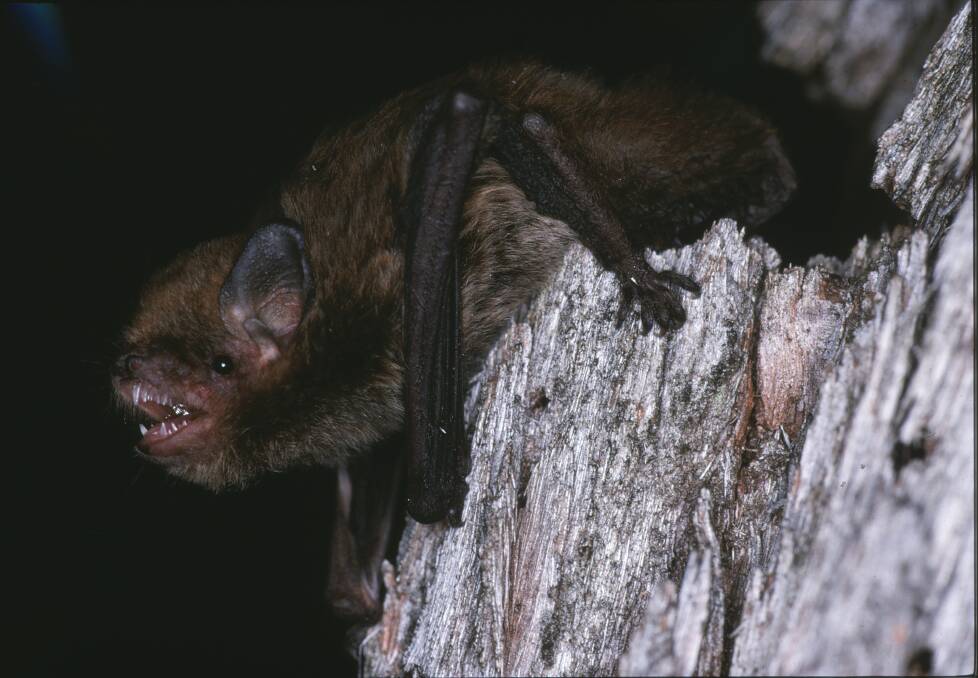
I enjoy walking my dog on an early autumn evening while a microbat or two swoops and soars up and down the road above us.
Subscribe now for unlimited access.
$0/
(min cost $0)
or signup to continue reading
As the days shorten, and winter approaches, small insectivorous bats - or microbats - are often seen feeding at dusk, using gaps in the forest such as house clearings and dirt roads.
Just like birds, microbats have particular areas in the forest they prefer foraging.
Large forest bats capture moths, beetles and flies in the open space between the canopy and the understory, whereas white-striped freetail bats forage above the canopy, and lesser long-eared bats within the canopy.
These tiny animals are feeding as much as they can before the relatively lean times of winter.
You can distinguish a bat at dusk flitting about from a swallow by its jerky flight as it swoops and rebounds in search of insects, with dramatic 'stop-start' moves as insects are captured.
The swallow's flight is smooth and circular, slicing the air in rolling arcs.
The large forest bat pictured here gets its name from the fact that it is the largest species in a family of very small bats.
The large forest bat is only six grams in weight, and when it is in the palm of your hand, takes up the size of a 50 cent piece.
Large forest bats are one of the most commonly recorded species in the wombat forest.
This species can forage at lower temperatures that other bat species, so it is well suited to life in the cold forests.
Other common foothill forest bats include the closely related little forest bat, the lesser long-eared bat, and the gould's wattled bat.
All of these bats roost in tree hollows, bark crevices and sometimes in buildings.
During winter, and cold summer nights, when there is no point expending energy by hunting, bats go into torpor, which is a mild form of hibernation.
They lower their heart rate, breathing and body temperature. If they have long ears, like the lesser long-eared bat, they fold these away like little fans.
Many of our local bats have twins, and these little guys require a lot of insects to reach adulthood.
How can bat parents ensure that there is enough time for the young to grow up and put some fat reserves before the long cold winters set in?
The bats mate in autumn and winter, with the female storing the sperm in her reproductive tract in a special organ called a hibernation follicle.
In spring, the female ovulates, then impregnates herself with the still-viable sperm, and the breeding cycle begins again.
The two young are born in late November or December, when there are plenty of insects to feed the lactating mother bat.
This article is reprinted from Daylesford Nature Diary; six seasons in the foothill forests. Published in 2013, this book is still selling. Copies are available at the Daylesford Visitor Centre or Paradise Books. Purchase details are on my blog From Forest to Forest at https://tanyaloos.wordpress.com

